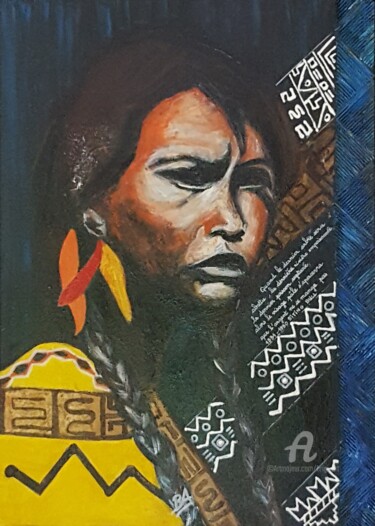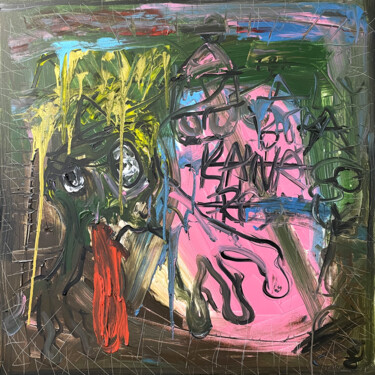10 Originele kunstwerken, limited editions en prints:
Conceptuele kunst, ook wel conceptualisme genoemd, is kunst waarbij het onderliggende idee of concept relevanter is dan het uiteindelijke product. Conceptuele kunstenaars creëerden tussen het midden van de jaren zestig en het midden van de jaren zeventig werken en geschriften die conventionele opvattingen over kunst fundamenteel verwierpen.
Om hun ideeën over te brengen, kozen conceptuele kunstenaars de media en formaten die voor hen het beste werkten. Dit leidde tot een grote verscheidenheid aan kunstwerken die op alles kunnen lijken, van uitvoeringen tot schrijven tot alledaagse voorwerpen. De kunstenaars gebruikten ongeziene systemen, structuren en processen, evenals linguïstische, wiskundige en procesgeoriënteerde elementen van de geest, om de mogelijkheden van kunst als concept en kunst als kennis te onderzoeken. Sommige conceptuele kunstwerken, ook wel installaties genoemd, kunnen door iedereen eenvoudig worden gemaakt volgens een reeks schriftelijke instructies.
De kwestie van artistiek vermogen is een belangrijk onderscheid tussen conceptuele kunst en meer "conventionele" vormen van kunst maken. Hoewel expertise in het gebruik van traditionele media vaak een kleine rol speelt in conceptuele kunst, is het moeilijk te beweren dat conceptuele werken altijd talent missen of dat vaardigheid niet nodig is om ze te maken.
De oorsprong van conceptuele kunst
Het is algemeen bekend dat Marcel Duchamp de conceptuele kunst heeft opgericht. Hoewel de term 'conceptuele kunst' pas in de jaren zestig werd bedacht, kunnen de wortels van de beweging worden gevonden in 1917, toen Marcel Duchamp op beroemde wijze een urinoir kocht van een loodgieterswinkel en het als een sculptuur invoerde in een open sculpturententoonstelling in New York. De jury diskwalificeerde het stuk omdat ze het immoreel vonden en het niet als kunst wilden accepteren. Duchamp creëerde het pad voor conceptuele kunst door de grenzen van kunst en kritiek op de kunstwereld te verkennen. Later erkende de Amerikaanse kunstenaar Joseph Kosuth de relevantie en theoretische betekenis van Duchamp voor opkomende 'conceptualisten' in zijn essay uit 1969, Art after Philosophy, waarin hij stelde: 'Alle kunst (na Duchamp) is conceptueel (van aard) omdat kunst alleen conceptueel bestaat. "
Al vanaf het begin van de jaren zestig gebruikten leden van de Fluxus-beweging de term 'concept art'. Het belangrijkste doel van de beweging was om los te komen van de exclusiviteit van het modernisme en een open houding ten opzichte van kunst te bevorderen. Kunstenaars die bij de Fluxus-beweging betrokken waren, waren geïnteresseerd in het uitbreiden van de referentiepunten van de esthetiek tot alles, van een object tot een geluid of een actie. Fluxus is ongetwijfeld een van de invloeden van de conceptuele kunst, ook al wordt het niet altijd als een onderdeel van de beweging beschouwd. Het was een belangrijke trend die vergelijkbaar was met het conceptualisme, en de beoefenaars ervan worden vaak conceptuele kunstenaars genoemd.
Mede als reactie op het formalisme zoals dat destijds werd beschreven door de beroemde New Yorkse kunstcriticus Clement Greenberg, ontstond in de jaren zestig conceptuele kunst als beweging. Volgens Greenberg streefde moderne kunst naar het doel om de fundamentele, formele aard van elk medium vast te stellen door middel van een proces van voortdurende reductie en verfijning. De componenten die tegengesteld waren aan deze aard moesten worden geminimaliseerd. De taak van schilderen was bijvoorbeeld om goed te beschrijven wat voor soort object een schilderij is, en niets anders: wat maakt het tot een schilderij en niets anders.
Anderen, waaronder veel van de kunstenaars zelf, zagen conceptuele kunst als een fundamentele breuk met Greenbergs vorm van formalistisch modernisme. Sommigen hebben gesuggereerd dat conceptuele kunst deze 'dematerialisatie' van kunst heeft uitgebreid door de noodzaak van dingen volledig te elimineren. Latere kunstenaars hadden dezelfde afkeer van illusie en voorkeur voor kunst die zelfkritisch is.
Tegen het einde van de jaren zestig was het duidelijk dat de regels van Greenberg om kunst binnen de parameters van elk medium te houden en externe onderwerpen uit te sluiten, niet langer geldig waren. In een poging om de galerie of het museum als decor en arbiter van kunst en de kunstmarkt als eigenaar en verkoper van kunst te ondermijnen, verzette conceptuele kunst zich ook tegen de commercialisering van kunst.
Op taal gebaseerde kunst
Taal was de eerste zorg van de eerste generatie conceptuele kunstenaars in de jaren zestig en begin jaren zeventig. Hoewel het gebruik van tekst in kunst niets nieuws was, duurde het tot de jaren zestig voordat kunstenaars als Lawrence Weiner, Edward Ruscha, Joseph Kosuth, Robert Barry en Art & Language kunst begonnen te maken uitsluitend door middel van taal. De conceptuele kunstenaars gebruikten taal in plaats van penseel en canvas en gaven het de vrijheid om op zichzelf betekenis te geven, in tegenstelling tot het verleden waar taal werd afgebeeld als een soort visueel element onder andere en ondergeschikt aan een algehele compositie (zoals synthetisch kubisme ).
De wending tot linguïstische betekenistheorieën in zowel de Anglo-Amerikaanse analytische filosofie als de structuralistische en poststructuralistische continentale filosofie in het midden van de 20e eeuw was volgens de Britse filosoof en conceptuele kunsttheoreticus Peter Osborne een van de vele factoren die de zwaartekracht beïnvloedden. naar op taal gebaseerde kunst. Deze taalverschuiving "ondersteunde en legitimeerde" de keuze van de conceptuele kunstenaars. Volgens Osborne waren de vroege conceptualisten de eerste generatie kunstenaars die een academische opleiding in de kunst voltooiden. In een latere openbare lezing verklaarde Osborne dat hedendaagse kunst postconceptueel is. Het is een claim die wordt gemaakt met betrekking tot de ontologie van de artistieke productie (in plaats van bijvoorbeeld op het beschrijvende niveau van stijl of beweging).
Beroemde conceptuele kunstenaars
Joseph Beuys
De Duitse kunstenaar Joseph Beuys (1921 -1986), actief in Europa en de VS van de jaren vijftig tot begin jaren tachtig, werd bekend door zijn werk in de internationale conceptuele kunst en Fluxus-bewegingen van die tijd. Beuys' omvangrijke oeuvre omvat zowel traditionele media zoals tekenen, schilderen en beeldhouwkunst als procesgeoriënteerde of op tijd gebaseerde 'actiekunst', waarvan de uitvoering suggereerde hoe kunst een genezend effect kan hebben wanneer het psychologische, sociale , of politieke kwesties (zowel voor de artiest als voor het publiek).
Joseph Kosuth
Joseph Kosuth (1945) is een Amerikaanse conceptuele kunstenaar en theoreticus. Halverwege de jaren zestig was Joseph Kosuth een van de grondleggers van de conceptuele kunst, die uitgroeide tot een belangrijke beweging die bloeide in de jaren zeventig en nog steeds impact heeft. Hij onderzocht de relatie tussen ideeën en de beelden en woorden die werden gebruikt om ze over te brengen en was een pionier in het gebruik van woorden in plaats van visuele beelden van welk type dan ook. Sinds de jaren zeventig heeft hij verschillende locatiespecifieke installaties gemaakt die blijven onderzoeken hoe mensen woorden ervaren, begrijpen en erop reageren.
Sol LeWitt
Sol LeWitt (1928 - 2007) was een Amerikaanse conceptuele kunstenaar en schilder. Door zijn leidende rol in de conceptuele beweging verdiende hij een plaats in de annalen van de kunstgeschiedenis. Zijn geloof in het creatieve proces van de kunstenaar speelde een cruciale rol in de verschuiving van de moderne naar de postmoderne periode. LeWitts definitie van conceptuele kunst als een intellectuele, pragmatische daad gaf een nieuw facet aan het werk van de kunstenaar dat duidelijk verschilde van de romantiek van het abstract expressionisme. LeWitts kunstwerken omvatten beeldhouwen, schilderen en tekenen naast vrijwel volledig conceptuele creaties die slechts concepten of componenten van het creatieve proces waren.
Robert Smithson
Meer jonge artiesten zijn beïnvloed door Robert Smithson (1938–1973) dan misschien enig ander lid van de groep die zich in de jaren zestig ontwikkelde. Hij was een getalenteerde kunstenaar en schrijver wiens interesses onder meer sciencefiction, mineralogie en katholicisme waren. Vroege werken van hem omvatten collages en schilderijen, maar al snel richtte hij zijn aandacht op beeldhouwkunst als reactie op het minimalisme en conceptualisme van de vroege jaren zestig. Hij begon zijn kunst ook buiten galerijen en in het landschap te brengen.
Damien Hirst
Damien Hirst (1965) is een Engelse kunstenaar, het kunsticoon van de jaren 90 en een van de grootste provocateurs van het einde van de 20e eeuw, maar ook een verdeeldheid zaaiende figuur in de hedendaagse kunstgeschiedenis. Charles Saatchi, een reclamemagnaat die potentieel zag in Hirsts ontbindende dierenlijken en hem een bijna onbeperkt geld gaf om door te gaan, hielp de jonge en in wezen onbekende kunstenaar ver en snel op te klimmen.
Het onderwerp dood domineert veel van Hirsts stukken. Hij werd beroemd vanwege een oeuvre met geconserveerde, soms ontlede, dode dieren in formaldehyde, waaronder een haai, een schaap en een koe. De meest bekende was een 4,3 m lange, in formaldehyde ondergedompelde tijgerhaai in een glazen tentoonstellingskast genaamd The Physical Impossibility of Death in the Mind of Someone Living.
Voor een levende kunstenaar schreef Hirst geschiedenis in september 2008 toen hij zijn oude galerijen omzeilde en zijn volledige tentoonstelling, Beautiful Inside My Head Forever, bij Sotheby's per opbod verkocht. De veiling brak het record voor een veiling voor één artiest door £ 111 miljoen ($ 198 miljoen) op te halen.
Walter de Maria
Walter de Maria (1935 - 2013) was een Amerikaanse beeldhouwer en conceptueel kunstenaar. Walter de Maria creëerde interactieve sculptuurinstallaties en bood conceptuele ondersteuning voor grootschalige sculpturale werken, waarbij hij verschillende artistieke praktijkgroepen overbrugde die in de jaren zestig in populariteit groeiden. In latere werken creëerde hij ook verbindingen tussen kijkers en de natuurlijke wereld door visuele aspecten in de omgeving zelf op te nemen of natuurlijke elementen te integreren in galerie-instellingen. Zijn meest ambitieuze werken waren zeer grootschalig, niet alleen qua fysieke omvang, maar ook qua tentoonstellingsduur, met enkele tientallen jaren zowel binnen als buiten.
Jenny Holzer
Jenny Holzer (1950) is een Amerikaanse neoconceptuele kunstenaar. Haar werk richt zich voornamelijk op het communiceren van ideeën en woorden in openbare omgevingen en omvat grootschalige installaties, reclameborden, projecties op gebouwen en andere constructies, en verlichte elektronische displays. Jenny Holzer's op tekst gebaseerde kunstwerken zijn op onverwachte plaatsen te vinden: op t-shirts, billboards, parkeermeters en LED-borden (Holzer's kenmerkende medium).
Kunstenaar en politiek activist Holzer wil voorkomen dat mensen passief informatie uit ongunstige bronnen consumeren. De ambitie en omvang van haar kunst, die op openbare locaties over een groot deel van de wereld is tentoongesteld, is samen met haar reputatie gegroeid. Holzer sluit zich aan bij de gelederen van anti-autoritairen in de kunst vanaf het begin van het modernisme (dat in wezen een strijd tegen de traditie is) tot en met de eenentwintigste eeuw in haar sterke machtscynisme.
Laurentius Weiner
Lawrence Weiner (1942 - 2001) was een Amerikaanse conceptuele kunstenaar en een van de pioniers van tekst-als-kunst tijdens het tijdperk van het conceptualisme. Zijn woordgebruik is opmerkelijk vanwege zijn poëzie, zijn merkwaardige contact met de echte wereld en zijn kenmerkende, vaak levendige en vaak humoristische visuele vormen. Kunstenaar Weiner uit de arbeidersklasse beschouwde zijn schilderijen als een uitnodiging voor kijkers om hun relaties met de wereld om hen heen opnieuw te evalueren, vooral met andere mensen en machtssystemen.
Citaten van conceptuele kunstenaars
Sol LeWitt
“In conceptuele kunst is het idee of concept het belangrijkste aspect van het werk. Wanneer een kunstenaar een conceptuele vorm van kunst gebruikt, betekent dit dat alle planning en beslissingen vooraf worden gemaakt en dat de uitvoering een plichtmatige aangelegenheid is. Het idee wordt een machine die de kunst maakt.”
“Nieuwe materialen zijn een van de grote kwellingen van de hedendaagse kunst. Sommige kunstenaars verwarren nieuwe materialen met nieuwe ideeën.”
“Kunstenaars leren critici wat ze moeten denken. Critici herhalen wat de kunstenaars hen leren.”
“Bij conceptuele kunst is het idee of concept het belangrijkste aspect van het werk”
Joseph Kosuth
“Alles kan kunst zijn. Kunst is de relatie tussen relaties, niet de relatie tussen objecten.”
“Alle kunst (na Duchamp) is conceptueel (in de natuur) omdat kunst alleen conceptueel bestaat.”
Damien Hirst
"Je hebt een groot ego nodig om artiest te zijn."
“Musea zijn voor dode kunstenaars. Ik zou mijn werk nooit in de Tate laten zien. Je zou me nooit op die plek krijgen.
Walter de Maria
"Ik denk dat je, om een echte minimalist te zijn, zelf bijna onzichtbaar moet zijn."
"Elk goed werk zou minstens tien betekenissen moeten hebben."
Jenny Holzer
"Gebrek aan charisma kan fataal zijn."
"Gelukkig zijn is belangrijker dan wat dan ook."
"Alle dingen zijn subtiel met elkaar verbonden."
"Je bent het slachtoffer van de regels waaraan je leeft."
Laurentius Weiner
“De enige kunst waarin ik geïnteresseerd ben, is de kunst die ik niet meteen begrijp. Als je het meteen begrijpt, heeft het eigenlijk geen nut, behalve als nostalgie.”
Discover contemporary artworks on Artmajeur
Contemporary art is a vibrant constellation of artistic expressions. This creative universe encompasses a wide array of mediums, from paintings, sculpture, and photography to drawing, printmaking, textile art, and digital art, each medium a star shining with its own distinct radiance. Artists use diverse supports and materials to bring their visions to life, such as canvas, wood, metal, and even innovative digital canvases for the creation of virtual masterpieces.
A contemporary painting, for instance, may weave its story through the masterful strokes of acrylic or oil, while a contemporary sculpture might sing its song in the language of stone, bronze, or found objects. The photographic arts capture and manipulate light to produce striking images, while printmaking employs techniques like lithography and screen-printing to produce multiples of a single, impactful image. Textile art plays with fabrics and fibers, whereas digital art pushes the boundaries of creation with innovative technology.
The allure of contemporary art lies in its boundary-pushing nature, its relentless quest for experimentation and its constant reflection of the evolving human experience. This boundless creativity, coupled with its strong social and personal commentary, makes every piece of contemporary art a unique emblem of its time, a mirror held up to the realities and dreams of our complex world. It whispers to us, moves us, provokes thought, and kindles a deep emotional response, stirring the soul of anyone willing to listen. It is, indeed, the language of emotions and ideas, spoken in the dialect of our era.
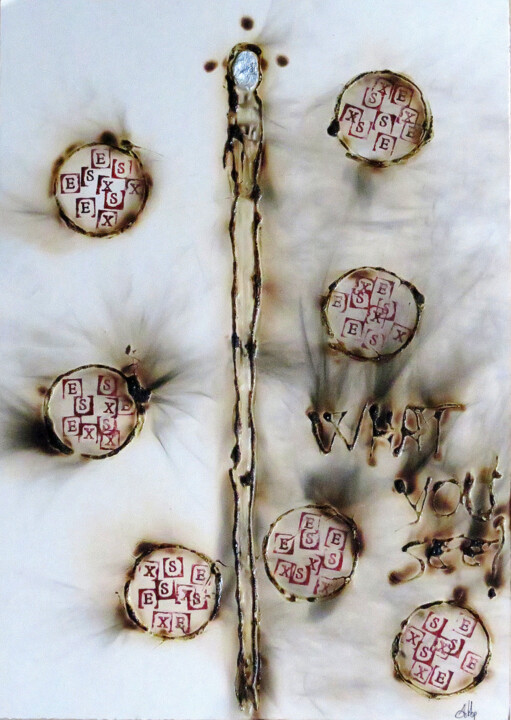
©2024 Abba
Origins and history of contemporary art
The story of contemporary art unfolds in the mid-20th century, marked by seismic shifts in artistic expression. Post-World War II, around the 1950s and 1960s, artists began experimenting beyond traditional confines, challenging the norms of what art could be. This revolutionary epoch birthed myriad new movements and artistic forms such as abstract expressionism, pop art, and minimalism. Paintings, once confined by realism, embraced abstraction, as artists used color and form to express emotions and ideas. Notable periods like the advent of pop art in the late 1950s and early 1960s saw artworks mimicking popular culture and mass media, reflecting society’s shifting focus.
The sculptural arts, too, witnessed a metamorphosis. Sculptors started to experiment with new materials and forms, often creating artworks that interacted with the viewer and the surrounding space, fostering a sense of engagement. Drawing, a timeless practice, also evolved, with artists incorporating innovative techniques and concepts to redefine its role in contemporary art.
Photography, a relatively new medium, emerged as a powerful tool in the contemporary art landscape. Born in the 19th century, it truly came into its own in the latter half of the 20th century, blurring the lines between fine art and documentation. Printmaking, a practice dating back to ancient times, saw renewed interest and experimentation with techniques like lithography, etching, and screen printing gaining prominence.
The realm of textile art expanded dramatically, as artists began to appreciate the versatility and tactile quality of fabric and fibers. Artists began using textiles to challenge the boundaries between fine art, craft, and design.
The dawn of digital technology in the late 20th century heralded a new age for contemporary art. Digital art emerged as artists started leveraging new technologies to create immersive, interactive experiences, often blurring the line between the virtual and the physical world.
Through these transformative periods, the essence of contemporary art has remained the same: a dynamic, evolving reflection of the times we live in, continually pushing boundaries and embracing the new, always questioning, always exploring.
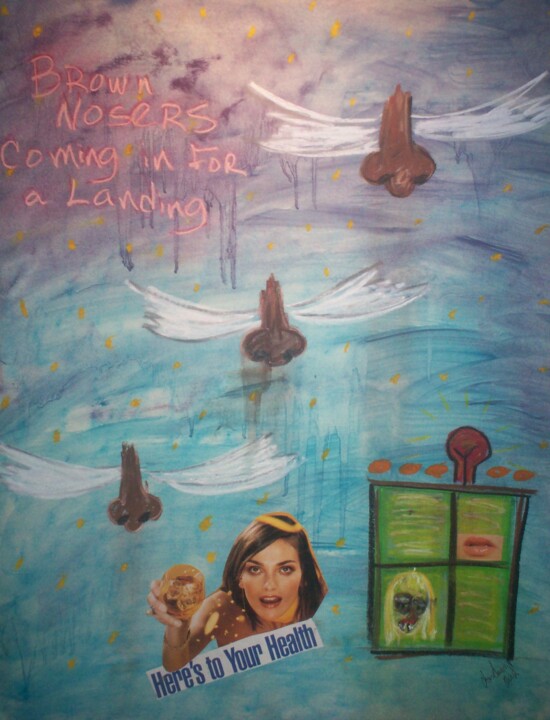
©2000 Donald Young (dondavid)
Evolutions of theses contemporary works in the art market
As we navigate through the 21st century, the dynamic landscape of contemporary art continues to evolve and expand, reflecting our ever-changing world. Contemporary paintings, once primarily confined to two-dimensional canvases, now embrace a multitude of forms and techniques, ranging from mixed media installations to digital creations, each piece a rich a weaving of thoughts, emotions, and narratives. Sculpture, too, has ventured far beyond traditional stone and bronze, with artists incorporating light, sound, and even motion, embodying the ephemerality and flux of the modern world.
Photography, in the hands of contemporary artists, has expanded its horizons, seamlessly blending with digital technology to create breathtaking imagery that challenges our perception of reality. Drawing, as well, has transcended the borders of paper, incorporating multimedia elements and exploratory techniques to redefine its role in the artistic discourse. Printmaking continues to flourish, with contemporary artists using traditional methods in innovative ways to deliver potent social and personal commentaries.
Textile art, once considered a craft, now holds a prominent place in the contemporary art world, with artists using it to explore issues of identity, tradition, and cultural heritage. Meanwhile, digital art, the newest member of the contemporary art family, has revolutionized the way we create and interact with art, presenting immersive experiences that blur the boundary between the virtual and the physical.
These diverse forms of contemporary art hold significant value in the current art market, not only due to their aesthetic appeal but also their ability to encapsulate and communicate complex ideas and emotions. Collectors, curators, and art lovers worldwide seek these works, drawn to their inherent dynamism, their innovative use of materials, and their eloquent expressions of our shared human experience. As a testimonial to our times, these contemporary artworks encapsulate the pulse of our society and the resonance of individual voices, forever etching our collective narrative into the annals of art history.
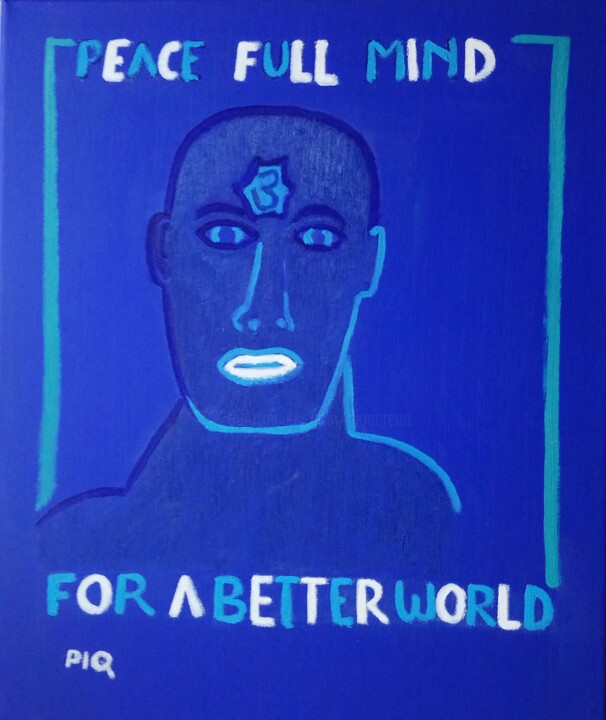
©2023 Gilles Piquereau
Famous Contemporary Artists
As we delve into the vibrant realm of contemporary art, we encounter an array of artists who shape this dynamic field. Each a master in their medium - painting, sculpture, photography, drawing, printmaking, textile, or digital art - they push artistic boundaries, reflecting our era and challenging perceptions. Let’s explore these remarkable contributors and their groundbreaking works.
1. Gerhard Richter - Known for his multi-faceted approach to painting, Richter challenges the boundaries of the medium, masterfully oscillating between abstract and photorealistic styles. His works, whether featuring squeegee-pulled pigments or blurred photographic images, engage in a fascinating dialogue with perception.
2. Jeff Koons - A significant figure in contemporary sculpture, Koons crafts monumental pieces that explore themes of consumerism, taste, and popular culture. His iconic balloon animals, constructed in mirror-polished stainless steel, captivate with their playful yet profound commentary.
3. Cindy Sherman - An acclaimed photographer, Sherman uses her lens to explore identity and societal roles, particularly of women. Renowned for her conceptual self-portraits, she assumes myriad characters, pushing the boundaries of photography as a medium of artistic expression.
4. David Hockney - Hockney, with his prolific output spanning six decades, is a pivotal figure in contemporary drawing. His bold use of color and playful exploration of perspective convey an intoxicating sense of joy and an unabashed celebration of life.
5. Kiki Smith - An innovative printmaker, Smith’s work explores the human condition, particularly the female body and its social and cultural connotations. Her etchings and lithographs speak to universal experiences of life, death, and transformation.
6. El Anatsui - A master of textile art, Anatsui creates stunning tapestry-like installations from discarded bottle caps and aluminum scraps. These shimmering, flexible sculptures blend traditional African aesthetic with contemporary art sensibilities, speaking to themes of consumption, waste, and the interconnectedness of our world.
7. Rafael Lozano-Hemmer - A leading figure in digital art, Lozano-Hemmer utilizes technology to create interactive installations that blend architecture and performance art. His work, often participatory in nature, explores themes of surveillance, privacy, and the relationship between people and their environments.

©2022 Alfonso Sánchez
Notable contemporary artworks
The contemporary art landscape is a dynamic patchwork of diverse expressions and groundbreaking ideas, each artwork a unique dialog with its audience. Here are a selection of some renowned contemporary artworks, spanning various media such as painting, sculpture, photography, drawing, printmaking, textile art, and digital art, that have profoundly influenced this vibrant movement.
"Cloud Gate" by Anish Kapoor, 2006 - This monumental stainless steel sculpture, also known as "The Bean," mirrors and distorts the Chicago skyline and onlookers in its seamless, liquid-like surface, creating an interactive experience that blurs the line between the artwork and the viewer.
"Marilyn Diptych" by Andy Warhol, 1962 - An iconic piece of pop art, this silkscreen painting features fifty images of Marilyn Monroe. Half brightly colored, half in black and white, it reflects the dichotomy of celebrity life and its influence on popular culture.
"Rhein II" by Andreas Gursky, 1999 - This photographic artwork, a digitally-altered image of the Rhine River, is celebrated for its minimalist aesthetic. It strips the landscape to its bare essentials, invoking a sense of tranquility and vastness.
"Black Square" by Kazimir Malevich, 1915 - A revolutionary painting in the realm of abstract art, this piece, featuring nothing more than a black square on a white field, challenges traditional notions of representation, symbolizing a new era in artistic expression.
"Puppy" by Jeff Koons, 1992 - This giant sculpture, a West Highland Terrier blanketed in flowering plants, explores themes of innocence, consumer culture, and the interplay between high art and kitsch. It’s a delightful blend of traditional sculpture and garden craft.
"Re-projection: Hoerengracht" by Ed and Nancy Kienholz, 1983-1988 - A room-sized tableau representing Amsterdam’s red-light district, this work combines elements of sculpture, painting, lighting, and found objects. It engages viewers in a stark commentary on commodification and objectification.
"Untitled" (Your body is a battleground) by Barbara Kruger, 1989 - This photomontage, combining black-and-white photography with impactful text, explores issues of feminism, identity, and power. Its potent, confrontational message is a prime example of the power of text in contemporary visual art.
"For the Love of God" by Damien Hirst, 2007 - This sculpture, a platinum cast of a human skull encrusted with 8,601 diamonds, probes themes of mortality, value, and the human fascination with luxury and decadence. It’s a compelling blend of macabre and magnificence.
"Physical impossibility of Death in the Mind of Someone Living" by Damien Hirst, 1991 - This artwork, featuring a tiger shark preserved in formaldehyde, blurs the line between traditional sculpture and biological specimen. It prompts viewers to contemplate mortality and nature’s ferocity.
"One and Three Chairs" by Joseph Kosuth, 1965 - A piece of conceptual art, it presents a physical chair, a photograph of a chair, and a dictionary definition of a chair, thus exploring the relationship between language, picture, and referent in art.
These pieces, in their diversity, exemplify the rich tapestry of contemporary art, each piece a unique commentary on our world and a testament to the limitless potential of creative expression.

Alfonso Sánchez
Acryl op Canvas | 47,2x31,5 in
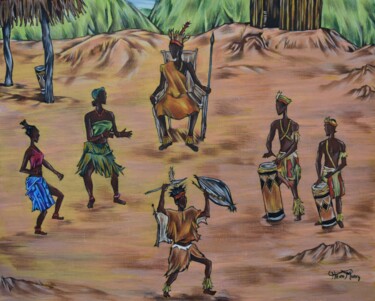
Hiten Mistry
Acryl op Papier | 16x20 in
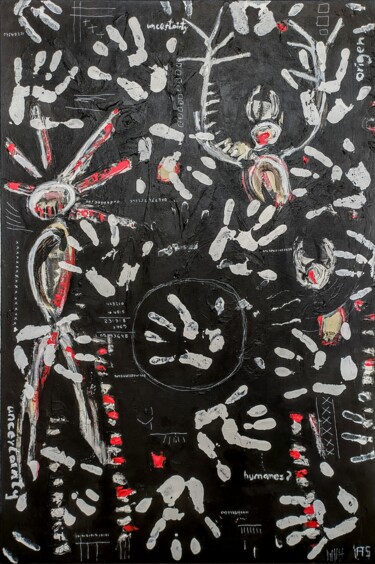
Alfonso Sánchez
Acryl op Canvas | 47,2x31,5 in
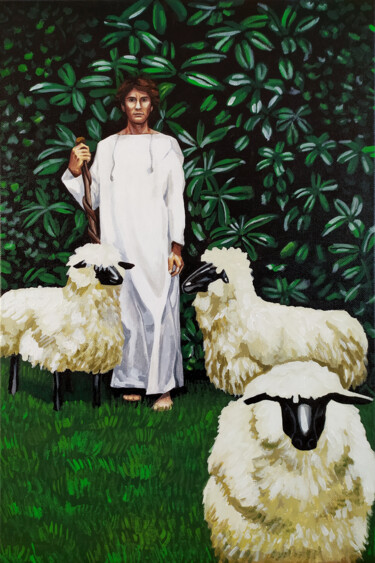
Mila Kochneva
Acryl op Canvas | 23,6x15,8 in
